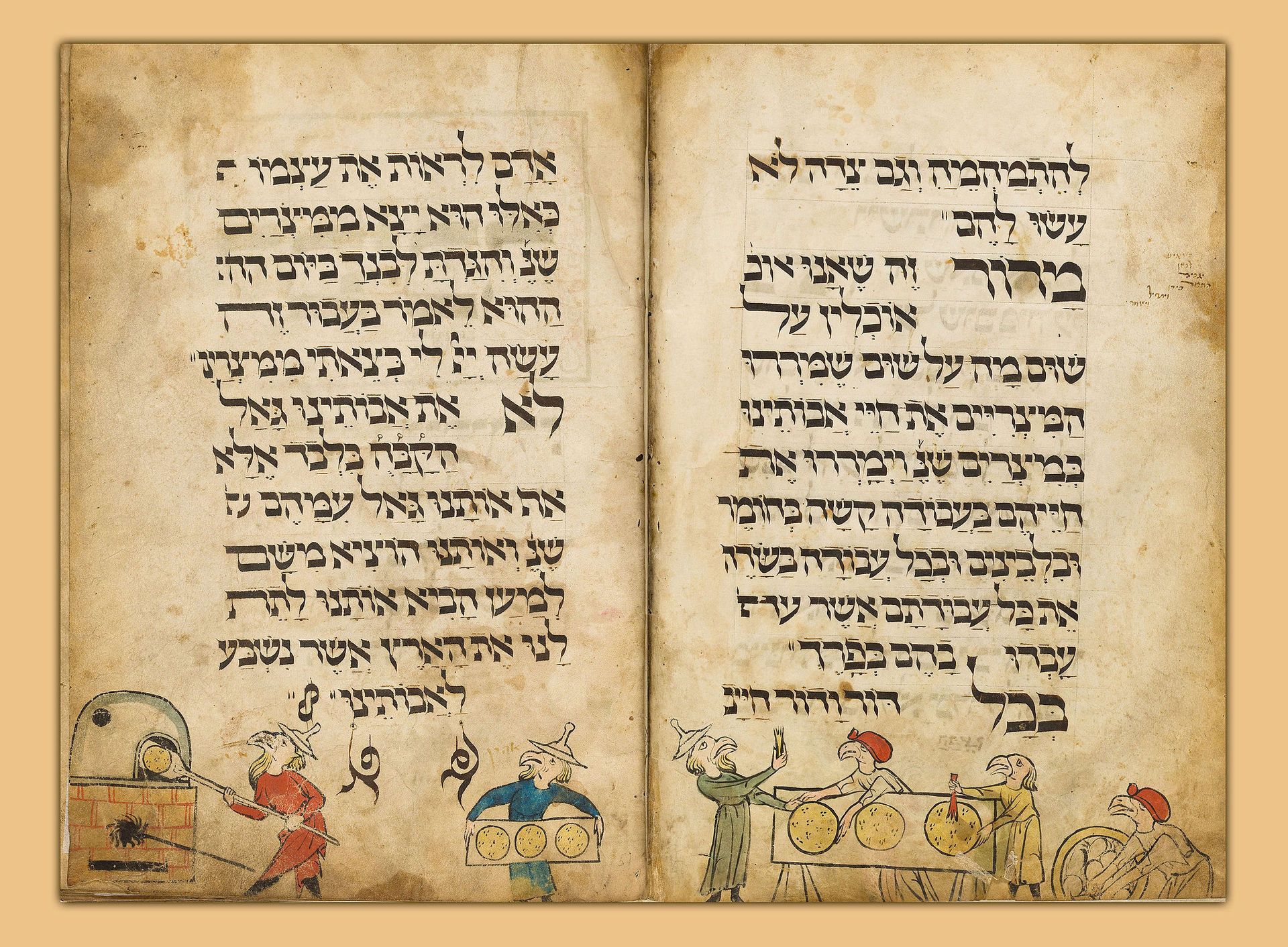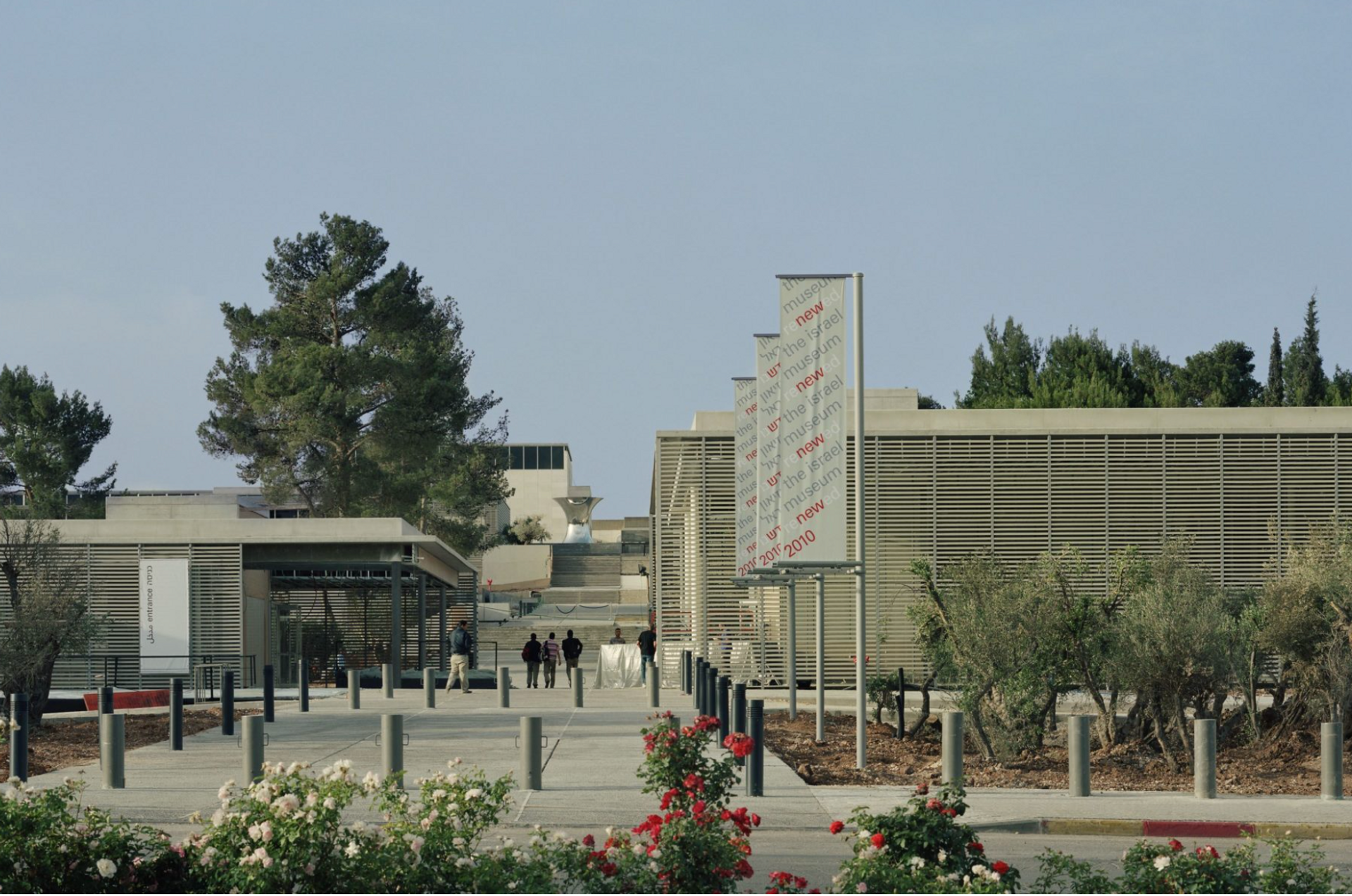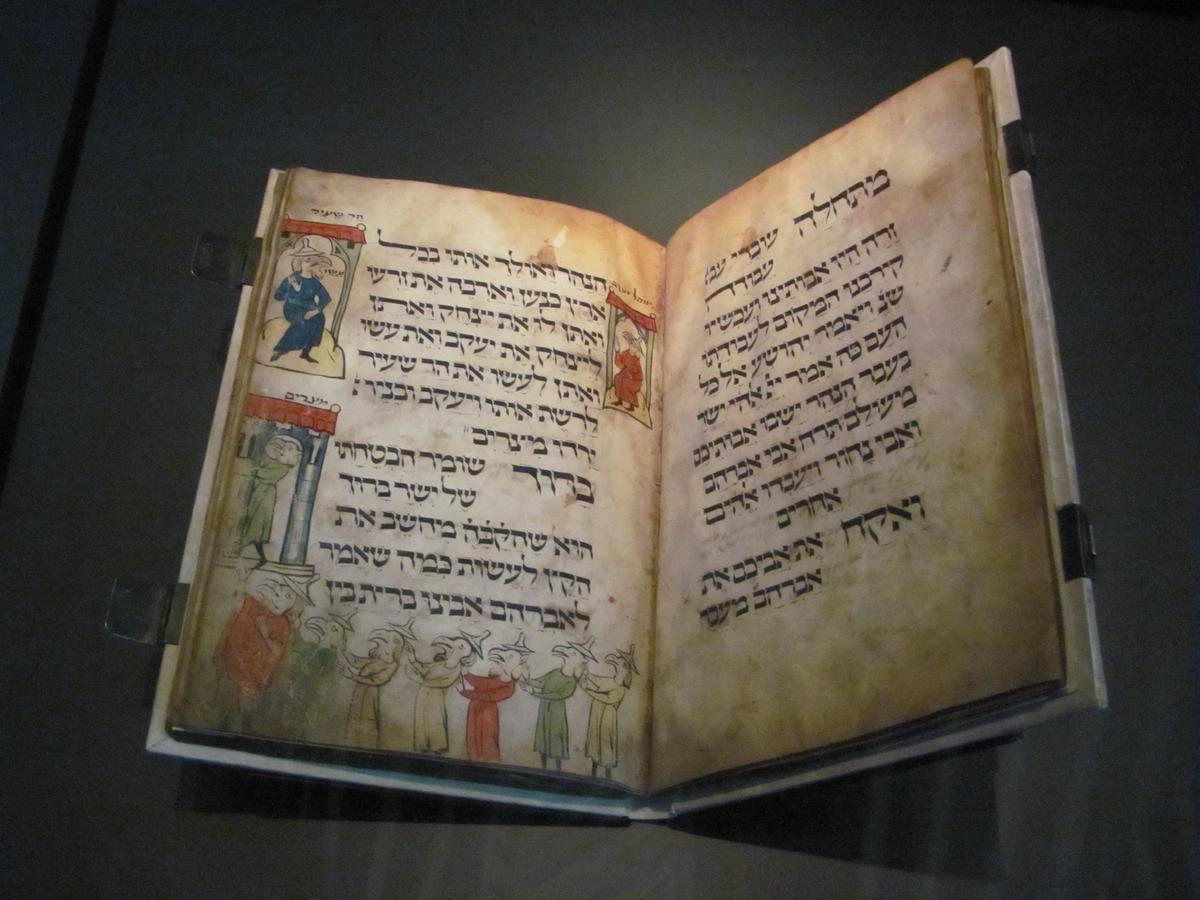A rare 14th-century Jewish manuscript is the subject of an unprecedented lawsuit filed this week against the Israel Museum in Jerusalem. The institution is refusing to restitute the Birds' Head Haggadah, which has been in its collection since 1946, to the heirs of Ludwig Marum, a German politician who was one of the first Jewish victims of the Holocaust.
The case was filed in New York's Supreme Court by four of Marum's grandchildren—three of whom are also Holocaust survivors—to demand the object be returned to them. This marks the first time a restitution lawsuit for an object allegedly lost in the Holocaust has been filed against any museum in Israel.
The book's disputed provenance and ownership was brought to public attention in 2016 when Marum's heirs began demanding financial compensation from the museum for what they deem as illegal possession of their family heirloom. Dated to around 1300, the manuscript was produced in southern Germany and is described by the museum as the oldest surviving illuminated Ashkenazi Passover Haggadah, a ritual text used in Passover celebrations. While the museum has declined to estimate the manuscript's market value, the lawsuit claims it is worth $10m.

Two pages of the Birds' Head Haggadah.
Around 1910, it was given to Ludwig Marum, a Karlsruhe-based lawyer who was one of the few Jewish people serving in German parliament during the rise of Nazism. A high-profile and staunch critic of the Third Reich, he was murdered at Kislau concentration camp in 1933.
In the court complaint seen by The Art Newspaper, the plaintiffs—Eli Barzilai, Dominique Avery, Andrée Fischer and Ludwig Marum—claim that the book was stolen after the Nazis forced the Marum family to relocate following Ludwig's arrest. The book is now positioned prominently in the museum on permanent display. Since the 1980s, following multiple requests from Ludwig Marum's late daughter Elisabeth, a plaque hangs next to the display. It says that the book was in the possession of the Marum familly during the Nazi era but is now owned by the museum: the latter statement is refuted by Marum's heirs.
Central to their argument is that the Haggadah was purchased by the Bezalel National Museum (which was incorporated into the Israel Museum in 1965) without the family's consent "for $600 in a backroom deal without obtaining any proof of ownership". Claims from the vendor Herman Kahn, a Jewish refugee in Palestine who had lived near the Marums in Karlsuhe, about the lawful possession of the book "fell apart upon the lightest questioning", the complaint reads. It continues that the museum had also removed a flyleaf from the manuscript that showed that the book had been in possession of the family for more than 75 years. It accuses the museum of an intentional failure to investigate whether the item was stolen.

The Israel Museum in Jerusalem. Courtesy of The Israel Museum
Marum's heirs also claim that the museum had, for over three decades, refused to acknowledge the legitimate ownership claims issued by Elisabeth, who died in 1998, asserting instead that the Haggadah really “belonged to the Jewish People”. However, the Israel Museum claims that it was Elisabeth herself who granted the institution the right to continue to display the object.
“In 1950, a business associate of the late Ludwig Marum told Marum’s daughter Elisabeth that the Haggadah was acquired in Israel by the Bezalel Museum. In 1984, Elisabeth visited the Israel Museum and subsequently wrote a letter on behalf of the family that the Haggadah should continue to be part of the Museum's collection 'for the benefit of the public'. At her request, the label was updated to recognise the family," the museum says in a statement shared with The Art Newspaper. "It is unfortunate that 40 years after Elisabeth wrote to the Israel Museum that the Haggadah should remain in its collection, her daughter, niece, and nephews are suing the Museum with an attempt to undo her wishes."
In response, the plaintiffs' lawyer in Jerusalem, Meir Heller, tells The Art Newspaper: "The museum well knows that Elisabeth considered suing the museum, and refused to relinquish the family’s ownership of the Haggadah. The fact that Elisabeth believed, as do the heirs today, in allowing the public to access to the Haggadah, does not give the museum any basis to claim ownership to the family property, then, or today."
The plaintiffs wish for the book to be physically removed from the Israel Museum and to have it renamed the "Marum Haggadah". They hope to then display it publicly in "a worthy institution". However, the book's lucrative potential is likely also a reason for demanding its full return. In 2008, the Israel Museum published a pop-up book based on the Birds' Head Haggadah, which is still available to buy in New York outlets. Parts of the book have been reproduced in full colour in The Medieval Haggadah: Art, Narrative, and Religious Imagination, published by Yale University Press in 2011; images of pages from the books are also sold as postcards in the Israel Museum's gift shop.
Describing the Haggadah as being in the collection of the Israel Museum and writing of the Marums' ownership in the past tense has caused the plaintiffs financial damages since it "diminishes the value of their ownership interests should they wish to sell the Haggadah," the complaint reads. Furthermore, it "deprives them of the value they would receive from sales of the pop-up Haggadah".
This is likely the last Holocaust restitution suit in history to be filed by heirs who are themselves Holocaust survivors


